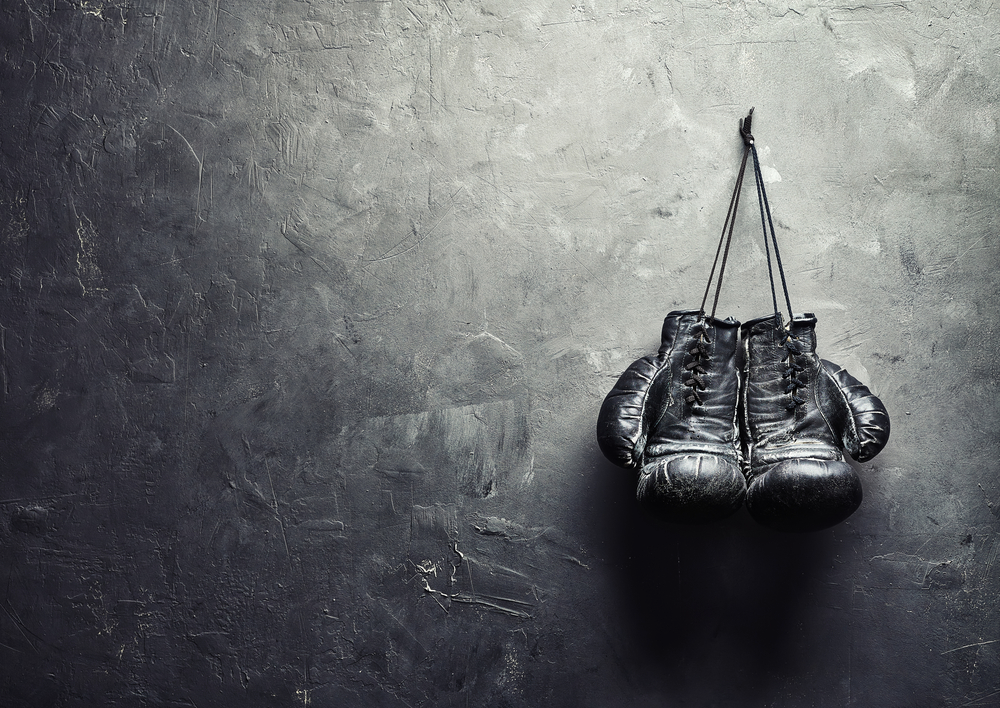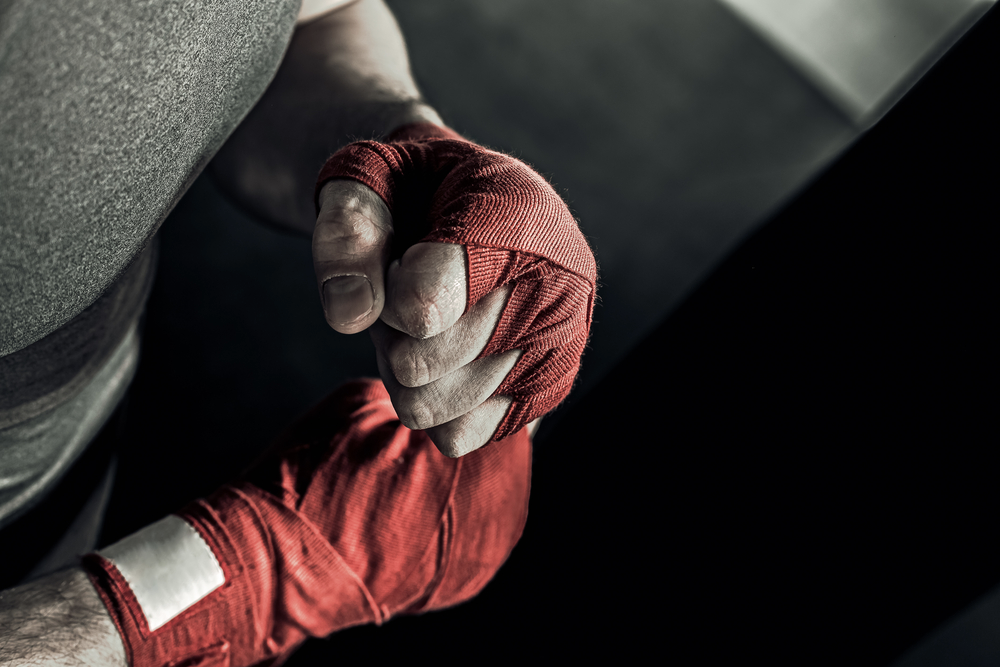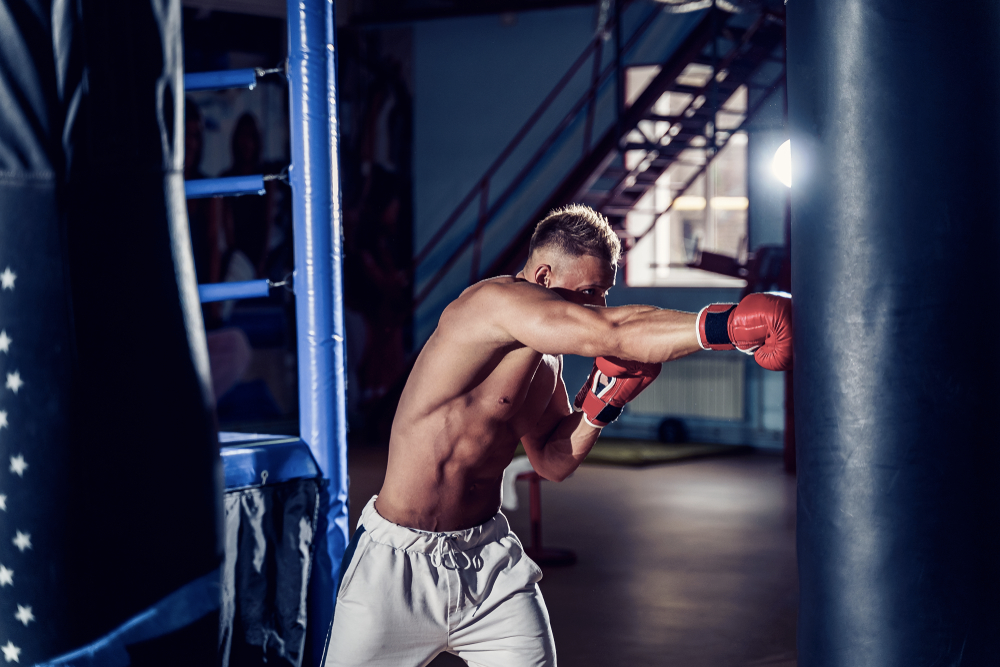
“Everyone has a plan until they get punched in the mouth.” – Mike Tyson
Leave it to the oft-quotable and inimitable “Iron Mike” Tyson to capture what it means to be resilient, in boxing and in life. It’s certainly easy to map things out when things are going well or when our heads are in the right place. When things go awry, it’s not so easy.
With all due respect to Mr. Tyson, however, let’s do our best to anticipate, plan for, and mitigate certain injuries that are common to the sport of boxing. Being aware of potential perils can help you take preventative measures, which could help you avoid ever experiencing any of these.
So, without further ado, let’s take a look at seven common injuries boxers face and how to protect yourself.
1. Boxer’s Fracture
If you have it, the instantaneous pain will let you know it. Boxer’s fracture is, essentially, a break in the small bones of your palm, just under the ring and little fingers. Sturdier bones can survive the shock of hitting a rock-solid opponent or immovable object, but, unfortunately, fragile and thinner bones can’t.
Proper punching technique, honed in all those hours of boxing training, is the best way to prevent a boxer’s fracture. Another thing to keep in mind is your diet. Pair a healthy diet with an active lifestyle to stay as strong as possible.
2. Traumatic Carpal Bossing
Carpal bossing typically isn’t painful, but it looks pretty weird and could keep you out of the ring if it becomes painful or affects the movement of the tendons and ligaments in your hand.
Afflicting mainly those between ages 20 and 40—so, pretty much the age group of most serious boxers—it is, essentially, a slight massing of bone on the back of your hand where the long carpal bones meet the wrist.
Carpal bossing usually results from a traumatic injury (like punching something really hard) or repetitive use (like hitting the bag over and over and over again), so proper hand-wrapping and use-appropriate equipment are the best preventative measures. Ice can help, as does adequate rest, to allow for recovery from punches landed.
3. Cuts and Lacerations
This one doesn’t require much explanation. As to why they spring up?
It’s because of the angle of the glove or that the attack was so forceful it caused the skin to quickly crumple and tear.
First and foremost, wearing comfortable and appropriate protective headgear is a must every time you get between the ropes.
Also, dedicate some more time to defensive technique during your training. Using oils and lotions is also a useful tip, as these may lessen friction and reduce the likelihood of cuts.

4. Shoulder Dislocation
A dislocated shoulder hurts a lot and can be very serious. Don’t just assume you or someone in your corner can “pop it back into place.”
A shoulder dislocation occurs when your upper arm bone gets torn away from your shoulder, and it can range from easy to deal with to a nagging, reoccurring issue.
Being in prime shape and maintaining proper form throughout a fight is the best way to prevent a dislocated shoulder.
Keeping your body compact by keeping your arms close to your body, and avoiding overdoing your swings, is an essential part of this. Make sure that you focus on shoulder mobility as an ongoing part of your training.
5. Concussion
As anyone who’s had one can attest, concussions are very serious matters. While some might heal after a day or so of rest, others can linger and present a wide range of issues that will hamper your quality of life, as well as your ability to compete.
Concussions occur after direct, strong blows to the head, but they can also spring from seemingly more innocent punches.
Simply stated, there is no way to prevent a concussion when you’re boxing. If you feel out of it at all, consult a doctor as soon as possible and be smart about following to a tee his or her advice.

6. Sprains and Strains
No matter how strong and in shape you are, absorbing punches can lead to strains and sprains on your torso and extremities.
Sprains affect ligaments, the thick tissues connecting bone to bone, while strains are injuries to muscles and tendons. Be wary of strains in ankles and wrists and sprains in your back, biceps, and elbows.
Again, a thorough training routine that focuses on both strength and mobility (i.e. full range of motion at the joints) for the whole body is huge for preventing these types of problems.
7. Fractures to Nose, Jaw, and Ribs
Unsurprisingly, getting hit in the face and/or torso can lead to fractures in the nose, jaw, and ribs. Once again, preventing these injuries comes down to perfecting your slipping and blocking skills as much as possible.
General Advice
While injuries are sometimes inevitable, combining the above with any of the below can help prevent them from rearing their ugly heads regularly.
- Protective Gear: Don’t ever train or compete without the proper equipment, including headgear, a cup, a mouthpiece, hand wraps, gloves, or proper footwear.
- Petroleum Jelly: Rubbing some of this on your face can help punches slide off on contact, reducing the chances of cuts and lacerations.
- Ice: Applying ice to your muscles can decrease soreness and inflammation, help to heal, and prevent additional injuries.
- Rest: After sparring in practice or a fight, there’s really no substitute for rest. Get off your feet, eat well, and get adequate sleep.
- Stretching: Guard against annoying muscle strains by implementing a well-rounded stretching routine before and after your workout. Joint mobility will not just help you avoid certain injuries, it can also improve performance in the ring.
- Conditioning: The goal of conditioning is to train your body to be able to endure more for longer. If you’re properly conditioned, and your body is familiar with the types of movements that are likely while in the ring, then there is less likelihood of suffering many types of injuries.
About The Author:
 Albert Guardado Jr. is a retired boxer and current Product Support Supervisor for Combat Brands. Albert oversees the product portfolio for all three branches of Combat Brands. He was a member of the 1996 U.S. Olympic Boxing Team (Atlanta, GA) and a former member of USA Boxing’s Board of Directors. Albert is a three-time USA Boxing National Champion, as well as the 1992 National P.A.L. Champion. He also medaled in the 1993 World Championships, 1994 Goodwill Games, and 1995 Pan-American Games. Albert continues to share his extensive boxing knowledge by coaching, blogging, and assisting with tournament administration at events supported by Combat Brands.
Albert Guardado Jr. is a retired boxer and current Product Support Supervisor for Combat Brands. Albert oversees the product portfolio for all three branches of Combat Brands. He was a member of the 1996 U.S. Olympic Boxing Team (Atlanta, GA) and a former member of USA Boxing’s Board of Directors. Albert is a three-time USA Boxing National Champion, as well as the 1992 National P.A.L. Champion. He also medaled in the 1993 World Championships, 1994 Goodwill Games, and 1995 Pan-American Games. Albert continues to share his extensive boxing knowledge by coaching, blogging, and assisting with tournament administration at events supported by Combat Brands.




